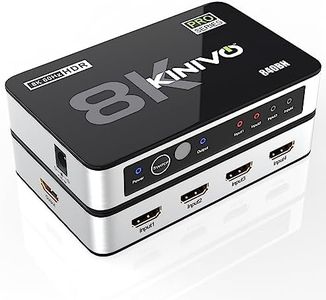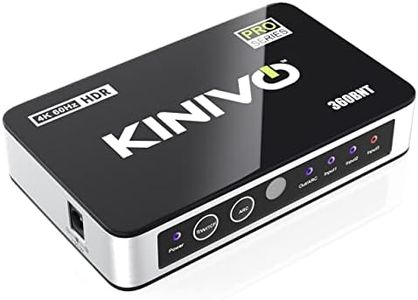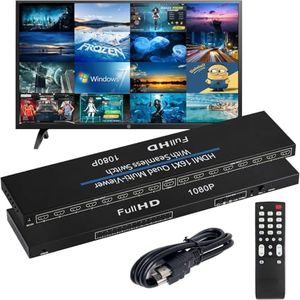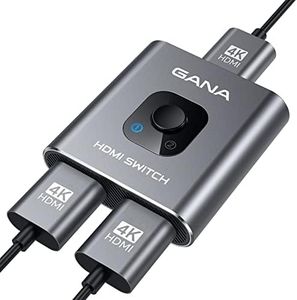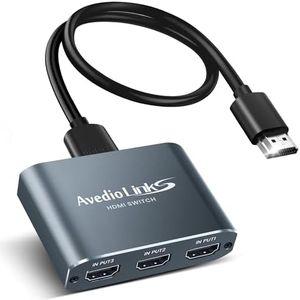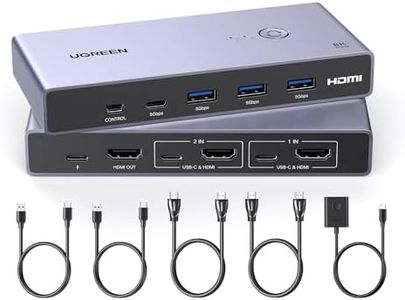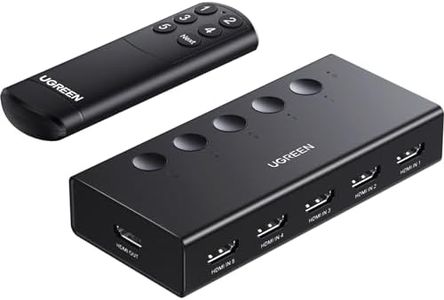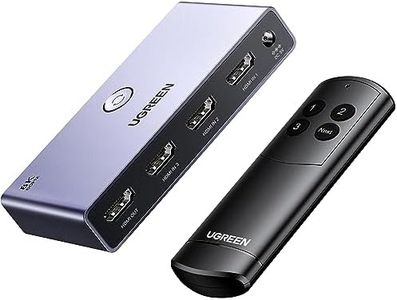We Use CookiesWe use cookies to enhance the security, performance,
functionality and for analytical and promotional activities. By continuing to browse this site you
are agreeing to our privacy policy
10 Best Hdmi Switches
From leading brands and best sellers available on the web.By clicking on a link to a third party's website, log data is shared with that third party.
Buying Guide for the Best Hdmi Switches
HDMI switches are handy devices that let you connect multiple HDMI sources (like gaming consoles, streaming boxes, or Blu-ray players) to a single HDMI input on your TV or monitor. If you have more devices than your TV has HDMI ports, a switch saves you the hassle of unplugging and replugging cables. To find the best HDMI switch for your needs, focus on key features and match them to how you plan to use your connected devices.Number of InputsThe number of inputs is the count of HDMI sources you can connect to the switch at once. This is important because it determines how many devices—like a Playstation, a streaming stick, or a DVD player—you can hook up simultaneously. HDMI switches usually come with 2, 3, 4, or even more inputs. If you have just one or two devices, a switch with a few inputs is enough. If you expect to expand or already have a setup with several devices, choose a model with extra inputs to avoid future limitations.
Output PortsMost HDMI switches have one output port to connect to your TV, but some may offer more if you want to send the same signal to multiple screens. Having extra outputs might matter in setups like home theaters or offices where you want the same content shown on different displays. For most typical home setups, a single output will do, but consider your plans before deciding.
Supported HDMI VersionHDMI versions (like 1.4, 2.0, or 2.1) set the standard for video and audio quality, supporting things like 4K resolution or high refresh rates. Choosing the right version ensures your devices work together at their best quality. Lower versions support standard HD, while higher ones allow for 4K, HDR, or even 8K video. If you have a 4K TV or advanced gaming devices, pick a switch that matches their highest HDMI version for full performance; otherwise, a basic version will be sufficient.
Video Resolution and FeaturesThis refers to the maximum video quality the switch supports (for example, 1080p, 4K, or 8K) and extras like HDR, Dolby Vision, or 3D. High video resolution and compatibility with modern features matter if you have or plan to use high-end TVs, projectors, or streaming devices. Consider what your display and sources support; if you’re just watching HD content, you don’t need 4K or HDR support, but if you want the latest picture quality, make sure your switch allows for it.
Switching MethodThis is how you change from one input to another. Some switches are automatic (they sense which device is active and switch for you), others have a button on the device, and some come with a remote control. Automatic switching is convenient for everyday setups, while manual or remote options give you more control. If you value ease of use from the couch or need to switch often, a remote-control switch is helpful; if your devices are in one place, manual or auto-switching might be plenty.
Power SourceHDMI switches can be passive (powered by the HDMI connection itself) or active (requiring an external power source like a USB or wall plug). Passive switches are simpler but sometimes struggle with longer cables or higher resolutions. Active switches offer more reliability, especially for demanding setups with 4K signals or multiple devices. If you use long HDMI runs or high-quality video, active switches can help prevent flicker or loss of signal; for simple home setups, passive might be enough.
Build Quality and SizeA sturdy, compact switch will last longer and fit better in your setup, especially if space is tight. Build quality includes the materials of the housing and the durability of HDMI ports—important if you plan to plug and unplug often. If your switch will be hidden behind a TV, a smaller design helps; if it’s frequently handled or comes with many cables, look for a robust build.

